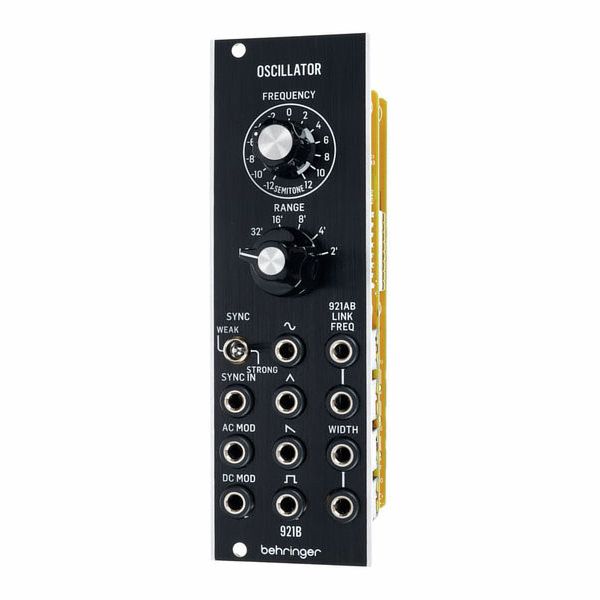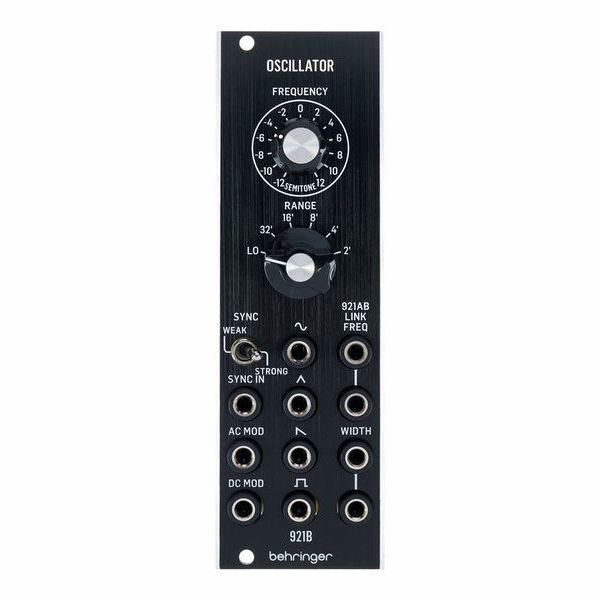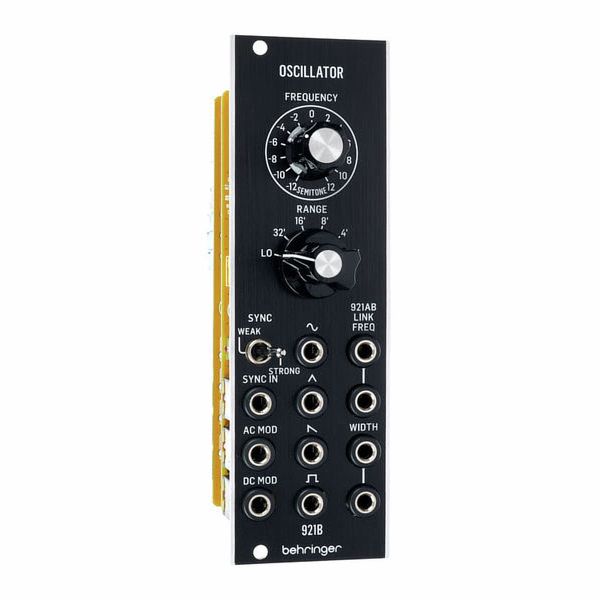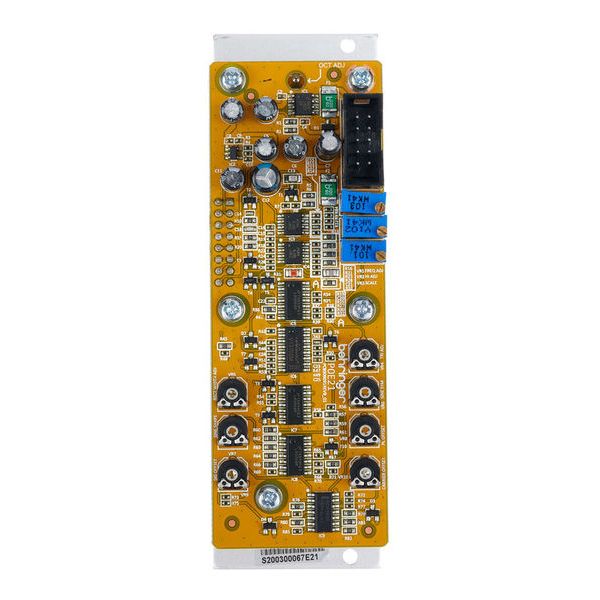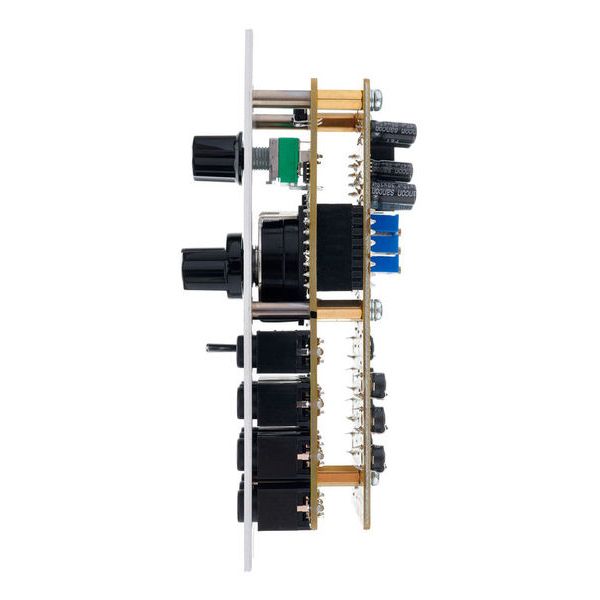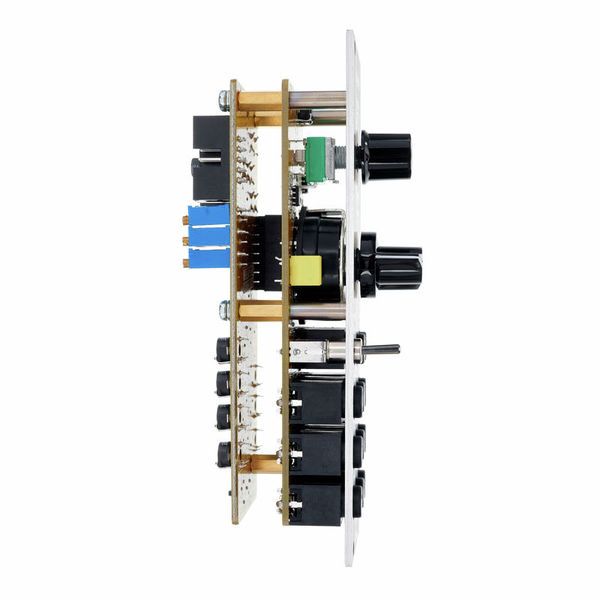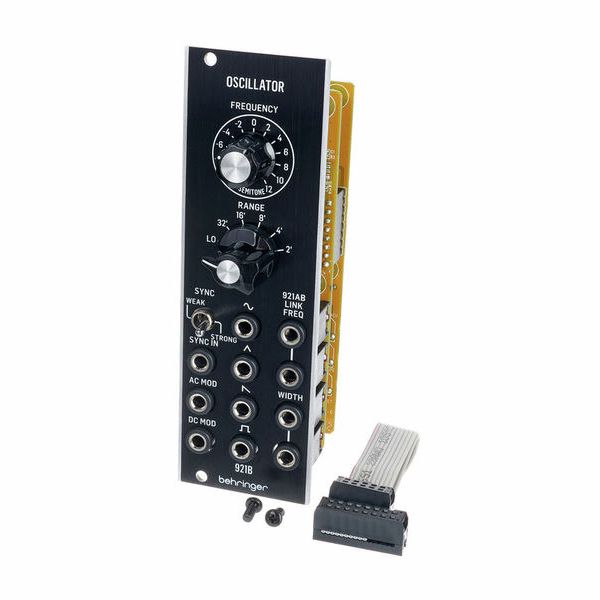I ordered 6 of these and received 4 due to shortages, but that's plenty to get started! These are an awesome Behringer reproduction of the Moog 921b. Here is my sLiGHtLy nErDy experience:
1) All 4 units I received were wrapped in packaging differently, two in anti-static bags and two others in anti-static bubble wrap. In all 4 cases, they used way too much heavy packing tape so the only way to unwrap the oscillators was to use either a pocket knife or sissors.... which I found to be a little dangerous. If you go to deep into the wrapping you risk nicking the oscillator.
2) No spec sheet or printed instructions in any of the boxes and I haven't found this information yet at Behringer either. Too bad because these oscillators don't come out-of-box with acceptable voltage tracking... you need to adjust that.
3) The oscillator built is magnificent and very solid. As a Electrical Design Engineer I congratulate Behringer on this... I design rugged computers and network switches for defense industry. These units are two circuit boards deep with the first board needed to support all of the I/O jacks and controls, while the lower board hosts much of the module oscillator circuitry. Very solid; not flimsy in any way. The silkscreen is perfect and the controls feel solid. The sync switch is actually a 3-position toggle switch (center off position) and weak or strong positions too.
4) I use Behringer Eurorack cases, I have a "Go" case and also a 104 Skiff case. Both of these cases are shallow but the oscillators do fit in either case although it's a close fit. The 10-turn pot adjustments for tuning the oscillators are placed toward the upper half of the back side... they could not fit on the bottom half of the back side due to shallow Behringer cases. I love the cost, look and feel of Behringer cases irregardless.
5) The sound is the best part. These oscillators sound amazing and are as good as the Moog originals in my opinion.
6) Tuning. Yes, tuning is required. There are three 10-turn pots for adjusting the scale and keyboard tracking. My oscillators needed the keyboard tracking 1V/octave adjusted and were noticeably out of tune after traveling only a couple of octaves from the tuned position; tuning fixed this. There are also back-side pot adjustments for sine-wave and sawtooth shapes... I haven't touched those because I didn't want to run for my oscilloscope. In total, there are three 10-turn pots for frequency and tracking and seven additional single-turn pots for waveform shapes etc.. I wish I could tell you about what "etc." means... but NO MANUAL... yet.
7) I use these in banks of three oscillators driving by a 921A Oscillator Driver (actually just two-per-bank right now due to shortages). I found that I could get all of the frequency knobs in the center position on both the 921A oscillator driver and 921B oscillators, ONLY if I patched negative 6 volts to the oscillator driver jack which was connected to the oscillators. I got the -6V from a Behringer CP35 module. If you don't use this -6V offset, good luck centering your frequency controls. You may have a handy programmable way to add this offset to the CV coming from your own setup.
8) I'm using a Polyend Poly 2 to convert midi to CV and V-Triggers, then I use a Behringer 961 to convert V-Triggers to S-Triggers for downstream 911's. Other than the Polyend module my system is so far all Behringer modules.
I'm very happy with my purchase.


